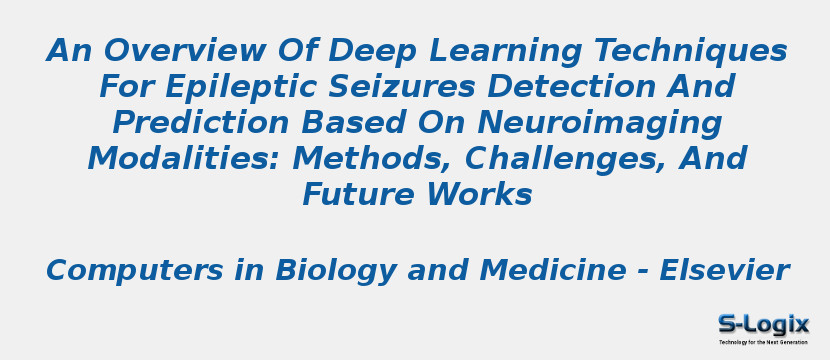Research Area: Machine Learning
Since epilepsy happens due to abnormal activity in the brain, seizures can affect any process your brain handles. Some signs and symptoms of seizures include confusion, abnormal staring, and rapid, sudden, and uncontrollable hand movements. Epileptic seizure detection methods involve neurological exams, blood tests, neuropsychological tests, and neuroimaging modalities. Among these, neuroimaging modalities have received considerable attention from specialist physicians. One method to facilitate the accurate and fast diagnosis of epileptic seizures is to employ computer-aided diagnosis systems (CADS) based on deep learning (DL) and neuroimaging modalities. This paper has studied a comprehensive overview of DL methods exploited for epileptic seizures detection and prediction using neuroimaging modalities. First, DL-based CADS for the epileptic seizures detection and prediction using neuroimaging modalities are discussed. Also, descriptions of various datasets, preprocessing algorithms, and DL models which have been used for epileptic seizures detection and prediction have been included. Then, research on rehabilitation tools has been presented, which contains brain-computer interface (BCI), implantable, cloud computing, internet of things (IoT), hardware implementation of DL techniques on field-programmable gate array (FPGA), etc. In the discussion section, a comparison has been carried out between research on epileptic seizure detection and prediction. The most important challenges in epileptic seizures detection and prediction using neuroimaging modalities and DL models have been expressed. In addition, future work proposal in the fields of datasets, DL, rehabilitation, and hardware models has been proposed. The final section is dedicated to the conclusion and incorporates the most significant findings in this field.
Keywords:
Author(s) Name: Afshin Shoeibi, Navid Ghassemi, Marjane Khodatars, Mahboobeh Jafari, Parisa Moridian, Roohallah Alizadehsani, Yinan Kong, Juan Manuel Gorriz, Javier Ramírez, Abbas Khosravi, Saeid Nahavandi, U. Rajendra Acharya
Journal name: Computer Science
Conferrence name:
Publisher name: arXiv:2105.14278
DOI: 10.48550/arXiv.2105.14278
Volume Information:
Paper Link: https://arxiv.org/abs/2105.14278
